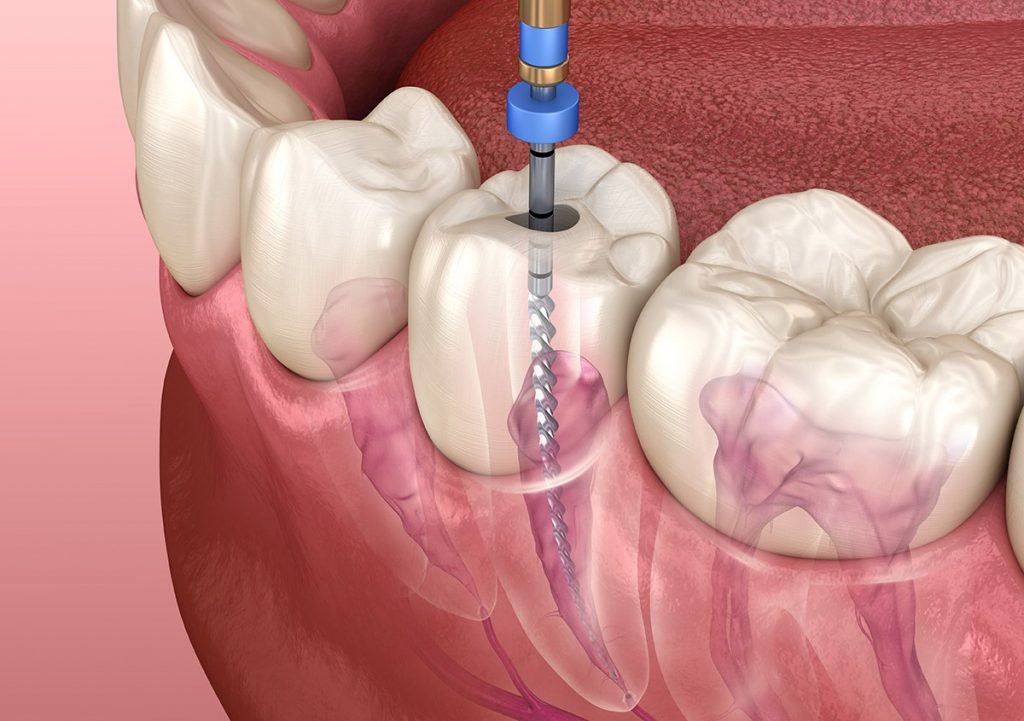A root canal is a treatment that is often necessary when the pulp of a tooth becomes infected. The pulp is the soft, spongy part of the tooth that contains nerve cells and blood vessels.
The procedure involves removing the infected tissue and antibiotics to prevent future infection. There are several side effects associated with root canals, but most people recover completely.
What is a root canal?
Root canal is a treatment for a tooth that is infected or has a cavity. The root canal cost Toronto, treatment involves removing the infected or damaged tooth and cleaning out the surrounding area.
The cleaned area is then filled with a material called cementum and sealed with a dental implant or a crown. If you have a lot of decay, your dentist may also remove part of the root to prevent further infection.
Side effects of root canal treatment include pain, inflammation, infection, bleeding, and swelling. Some people experience temporary sensitivity to touch in the tooth area post root canal treatment. If you experience any of these side effects, please speak with your dentist immediately.
Types of root canals
Root canals come in many shapes and sizes. There are three main types: endodontic (inside the tooth), periapical (near the apical (tip) of the tooth), and extra-apical (beyond the apical).
Each type of root canal has its own benefits and risks. Here are some basics about each type: Endodontic root canals: Endodontic root canals are the most common type of root canal.
They’re used to treat problems like decay, gum disease, and fractures in teeth. During a dental procedure called an endodontic treatment, a dentist uses special instruments to remove the infected area of your tooth and clean out the surrounding area.
The procedure is usually painless, but you may experience a mild soreness or stinging following surgery. Periapical root canals: Periapical root canals are used when there’s a problem with a tooth that’s close to the surface (the apical).
These canals may be necessary when there’s an infection or when a tooth is severely cracked or damaged. During a periapical treatment, your dentist will use special equipment to remove as much of the damaged tissue.
Procedure for a root canal
Root canals are procedures used to clean and remove the infected roots of teeth. A root canal is a surgical procedure that uses a variety of instruments to reach the infected root and remove it.
There are many different procedures and treatments for root canals, but they all have some common side effects. The most common side effect of a root canal is pain. The pain from a root canal typically lasts for around two weeks, but can vary depending on the individual’s sensitivity to pain medications.
However, it’s important to note that you can always take pain relief medication before the procedure, during the procedure, or post-procedure. Other side effects of a root canal include: infection, swelling, bleeding, and headaches.
However, these are usually mild and will go away after the root canal is completed. If you’re considering having a root Canal please be aware of these potential side effects and discuss them with your dentist.
Side effects of a root canal
If you’ve ever had a toothache, you’re familiar with the pain and discomfort that comes with having an infected tooth. Toothaches are caused by a variety of factors like dryness, dental problems, and periodontal disease.
If left untreated, these issues can lead to an infection in the tooth called a root canal. Root canals are often performed as a last resort when other treatments haven’t worked.
Here are some things to know about root canals:
- There are two main types of root canals-open and endodontic. Open root canals are done through a small opening in the top front of the tooth while endodontic root canals are done through the entire length of the root.
- The goal of a root canal is to remove all of the infected material and repair any damage that has occurred. In most cases, antibiotics are given prior to surgery to help prevent infection from setting in.
- Side effects of a root canal depend on a variety of factors including the type of anesthesia used, the severity of your dental issue.
Root canal risks and benefits
Root canal treatment is a common dental procedure that involves the removal of a dead or infected tooth. The root canal procedure can be quite extraction-intensive and often requires a considerable amount of anesthetic.
While the benefits of root Canal treatments cost Toronto are indisputable, there are also some potential risks associated with the procedure. In this blog section, we discuss some of the key risks and benefits associated with root canals.
What Are the Side Effects of a Root Canal?
Root canals are a common procedure in dentistry. They are often used to treat pain and infections in the teeth or gums. However, root canals have side effects.
Here is a list of some of the most common side effects of root canals:
- Toothache: The most common side effect of a root canal is a toothache. This occurs because the nerve that supplies the tooth with pain signals has been cut or blocked. Most people find relief from toothache by using over-the-counter painkillers or by taking ibuprofen before the procedure. If the pain is severe, you may need to see a dentist immediately.
- Swelling: Swelling is another common side effect of root canals. This occurs because the nerve and surrounding tissue have been damaged or removed. Swelling may cause discomfort, especially if it increases during the day. You may be able to reduce swelling by drinking plenty of fluids and using ice packs on your teeth for several hours after the procedure.
- Painful chewing: Some people experience painful chewing after a root canal. This is due to damage to the nerves that control chewing muscles in the mouth.

After the Procedure: Follow Up Care
Root canals are one of the most common dental problems, but luckily they’re typically easy to treat. Here’s a look at what to expect after your root canal procedure and some tips for follow up care.
If you’re feeling any pain or discomfort after your root canal, don’t hesitate to speak with your dentist. They may be able to prescribe pain relief medication or an ice pack for your tooth. In the meantime, make sure you keep your mouth clean and avoid eating sticky foods.
You should also visit your dentist every few days to check for signs of infection and make sure the root canal is healing properly. If there are any problems, contact your dentist right away.
Root canals are one of the most common dental problems, but luckily they’re typically easy to treat.
Here’s a look at what to expect after your root canal procedure and some tips for follow up care.
If you’re feeling any pain or discomfort after your root canal procedure, don’t hesitate to speak with your dentist. They may be able to prescribe pain relief medication or an ice pack for your tooth. In the meantime, make sure you keep your mouth clean and avoid eating sticky foods.
Emergency Treatment for Root Canals
Root canals are a common problem, and as such, emergency treatment is often necessary. In most cases, the root canal procedure can be carried out quickly and without any major side effects.
However, there are a few potential complications that can occur. The most common complication is infection. If infection does occur, it can lead to serious side effects, including sepsis (blood poisoning).
Sepsis is a life-threatening condition that requires immediate medical attention. In some cases, the infection may spread to other parts of the body and require surgery to treat. Another potential complication is the perforation of the tooth. This occurs when the tooth’s pulp (the soft tissue inside the tooth) becomes exposed outside of the tooth.
If this happens, it can lead to infection and swelling in the area around the tooth. Perforation also increases the risk of losing the tooth altogether.
Finally, depending on the type of root canal procedure performed, there may be minor side effects associated with anesthesia. These side effects typically go away within a few days but may include headaches, dizziness, and nausea.
Conclusion
If you are considering having a root canal, it is important to understand what the procedure entails and the potential side effects.
Here, we discuss some of the most common treatment options for root canals and outline their respective risks and benefits.
Finally, we provide information on how to prepare for your root canal visit so that you can have a safe and successful experience.



